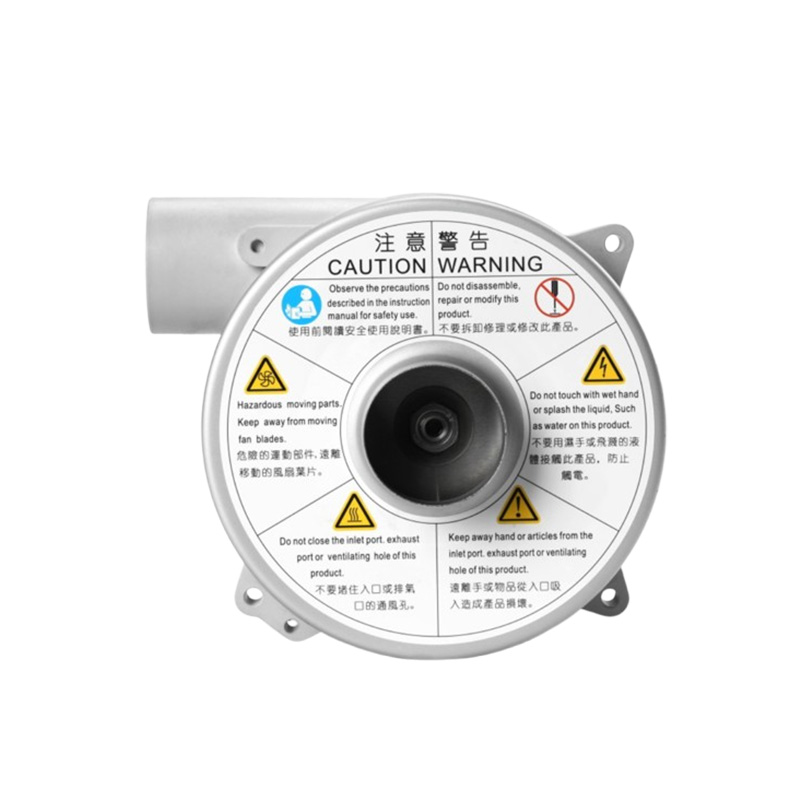In the ever-evolving industrial landscape, energy efficiency and environmental sustainability have become paramount concerns. Among the various technologies that have emerged to address these issues, high-pressure variable speed fans have shown remarkable promise. This article delves into the energy-saving and emission-reduction effects of high-pressure variable speed fans in the industrial field, highlighting their key benefits and practical applications.

Energy Efficiency: The Core Advantage
Dynamic Speed Adjustment
High-pressure variable speed fans stand out for their ability to dynamically adjust their speed based on real-time demand. Unlike traditional fixed-speed fans, which operate at a constant speed regardless of the load, high-pressure variable speed fans can ramp up or down as needed. This feature significantly reduces energy consumption, as the fan only consumes the power required to maintain the desired airflow or pressure.
Improved System Efficiency
By optimizing fan speed to match system requirements, high-pressure variable speed fans enhance the overall efficiency of industrial processes. For instance, in cooling systems, high-pressure variable speed fans can adjust their output to maintain optimal temperatures without overcooling or undercooling, thereby minimizing energy waste. Similarly, in ventilation systems, they can adapt to changes in air demand, ensuring continuous and efficient airflow.
Emission Reduction: A Greener Future
Lower Carbon Footprint
The energy savings associated with high-pressure variable speed fans translate directly into reduced greenhouse gas emissions. By consuming less electricity, these fans contribute to lower carbon dioxide (CO2) emissions, which is crucial in the fight against climate change. Additionally, the elimination of inefficiencies in industrial processes further reduces the need for fossil fuels, thereby cutting down on emissions from power generation.
Noise Reduction and Environmental Impact
High-pressure variable speed fans also offer noise reduction benefits. Traditional fans, especially those operating at high speeds, can generate significant noise pollution. High-pressure variable speed fans, with their variable speed capabilities, can operate at lower speeds and volumes, reducing noise levels and improving the overall working environment. This, in turn, has a positive impact on both worker health and the surrounding ecosystem.
Practical Applications and Case Studies
Industrial Cooling Systems
In industrial cooling systems, high-pressure variable speed fans are particularly effective. For example, in large-scale manufacturing facilities, where cooling is critical for maintaining machinery and product quality, high-pressure variable speed fans can be used to optimize airflow and temperature control. By adjusting fan speed in response to real-time temperature fluctuations, these systems can significantly reduce energy consumption while ensuring consistent cooling performance.
Ventilation in Mines and Tunnels
In mining and tunneling operations, ventilation is essential for worker safety and productivity. High-pressure variable speed fans can be tailored to provide the necessary airflow while minimizing energy use. By adjusting fan speed based on the number of workers, tunnel length, and other factors, these systems can ensure adequate ventilation without wasting energy.
Power Plants and Wastewater Treatment Plants
Power plants and wastewater treatment plants are other key applications for high-pressure variable speed fans. In power plants, they can be used to optimize cooling systems, reducing energy consumption and emissions. In wastewater treatment plants, high-pressure variable speed fans can help maintain optimal aeration conditions, improving treatment efficiency and reducing operational costs.
Economic Benefits and ROI
In addition to their environmental benefits, high-pressure variable speed fans offer significant economic advantages. The energy savings associated with these systems can lead to substantial cost reductions over time. Furthermore, the reduced maintenance requirements and longer lifespan of high-pressure variable speed fans compared to traditional fans contribute to lower overall operational costs.
The return on investment (ROI) for high-pressure variable speed fans can be particularly attractive in large-scale industrial applications. By analyzing energy consumption patterns and system requirements, companies can tailor high-pressure variable speed fan installations to maximize cost savings and environmental benefits.
Conclusion
High-pressure variable speed fans represent a significant advancement in industrial energy efficiency and emission reduction. By dynamically adjusting fan speed to match real-time demand, these systems offer unparalleled energy savings and environmental benefits. From cooling systems to ventilation in mines and tunnels, and from power plants to wastewater treatment plants, WinCend high-pressure variable speed fans have proven their versatility and effectiveness in a wide range of industrial applications.
As the world continues to prioritize sustainability and energy efficiency, WinCend high-pressure variable speed fans will play an increasingly important role in shaping the future of industrial operations. By adopting these technologies, companies can reduce their carbon footprint, improve worker health and safety, and achieve significant economic benefits.
www.wincendtech.com
WinCend Technology (Shenzhen) Co., Ltd.
